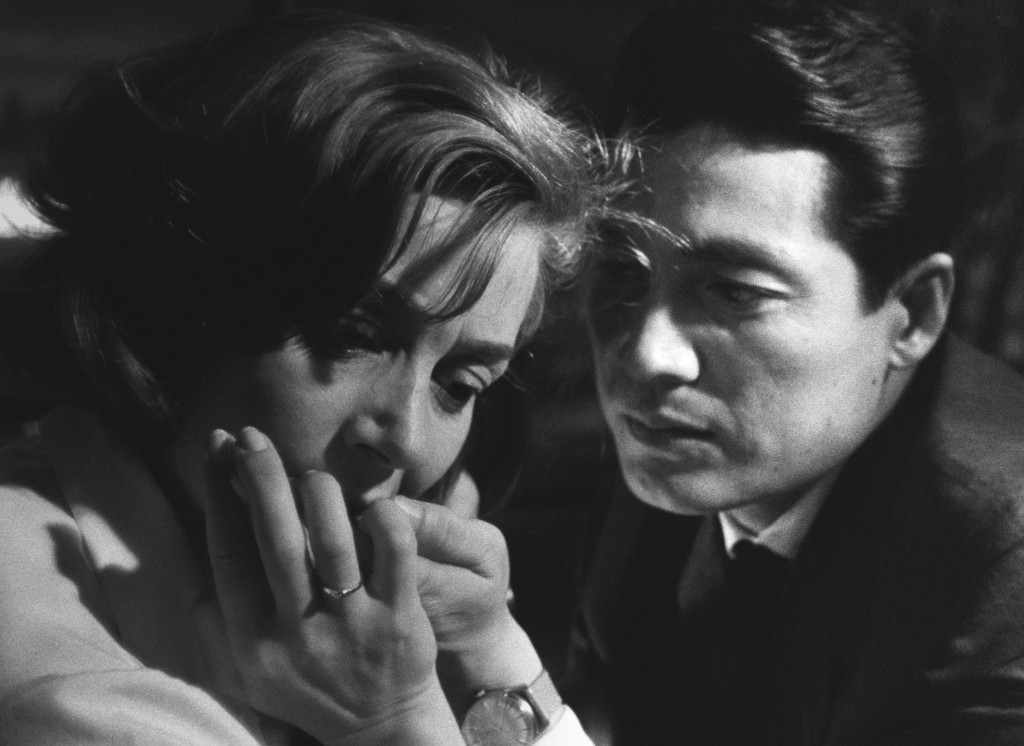Andrew Rostan was a film student before he realized that making comics was his horrible destiny, and he’s never shaken his love of cinema. Every two weeks, he’ll opine on current pictures or important movies from the past.
If the rest of the summer film season offers nothing that looks like it could match Fury Road and Inside Out, then the Gene Siskel Film Center at State and Randolph is here to help, with a festival whose calendar made me pant with excitement. The Recently Restored series, running from July 3 (or today) to August 16, showcases films from around the world, carefully returned to how both their original audiences saw them (in the finest picture and sound quality) and as their makers intended them to be seen (with the return of cut, damaged, or previously lost footage). It is a wonderful opportunity to see intriguing pictures you’ve never heard of before or check some masterpieces off your list.
In today’s column, I’m recommending ten highlights of the festival. Some are movies I’ve never seen and am excited to experience. Others are movies I have seen (sometimes on the big screen) and urge you to give them a chance as well.
Before I begin, a very fair addendum for dedicated cineastes. The Siskel’s associate programming director, Martin Rubin, wrote a great program note for Recently Restored in which he stresses the difference between preservation, saving and caring for the physical film, and restoration, restoring the movie to its highest aesthetic and intended quality. All but one movie playing at the Siskel will be shown in digital formats, most of them in the highest existing quality of digital projection. The longtime repertory house dweller in me mourns the loss of celluloid, but Rubin correctly points out that even restored film prints cannot perfectly recreate the original version of a movie. Digital restoration may involve compromises, but what it offers in enhanced sight and sound, especially in the hands of a considerate restorer, is worth it.
Now, on to my picks!
1776 (Today and 7/6)
One of the more faithful translations of a Tony-winning musical to the screen, Sherman Edwards and Peter Stone’s retelling of the signing of the Declaration of Independence is dramatic enough to not really need music (as the great Broadway historian Ethan Mordden pointed out). However, the songs are by turns hilarious and heartbreaking, the film is directed in a lovingly impressionistic style by Peter Hunt, and the acting, led by William Daniels as John Adams, is dead on. And in terms of restoration, this version runs twenty-seven minutes longer, with scenes Richard Nixon insisted be chopped.
A Hard Day’s Night (Today, 7/4, and 7/7)
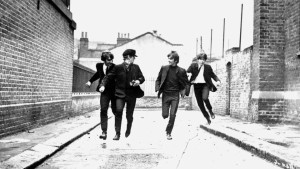 If you have never seen A Hard Day’s Night, then this is a necessary act. If it’s been a while, watch it and feel young again. The Beatles’ knowing wit and distinct personalities recall the Marx Brothers, and director Richard Lester creates a world of manic possibility and lackadaisical structure in which the Fab Four can be snappy, sarcastic, and charming. Fifty years later, so many movies wish they had A Hard Day’s Night’s expansive energy, which never crosses the line into annoying freneticism, and unadulterated joy. The songs are pretty good, too.
If you have never seen A Hard Day’s Night, then this is a necessary act. If it’s been a while, watch it and feel young again. The Beatles’ knowing wit and distinct personalities recall the Marx Brothers, and director Richard Lester creates a world of manic possibility and lackadaisical structure in which the Fab Four can be snappy, sarcastic, and charming. Fifty years later, so many movies wish they had A Hard Day’s Night’s expansive energy, which never crosses the line into annoying freneticism, and unadulterated joy. The songs are pretty good, too.
On Her Majesty’s Secret Service (7/12 and 7/14)
Of Eon Productions’ 20 pre-Casino Royale 007 films, this action masterpiece from 1969, directed by longtime editor Peter Hunt, is the closest to Daniel Craig’s series-redefining run. Having spent the sixties taking down SPECTRE, James Bond now must stop Ernst Stavro Blofeld’s final gambit to shatter the world…but when Bond falls for the beautiful, feminist, and incredibly badass fighter/race car driver Tracy di Vicenzo, love and duty collide on a mission full of surprising plotting, fearsome set pieces, and a genuine sense of darkness. George Lazenby is GOOD (despite what you hear to the contrary) in his only turn as Bond, but even better are Diana Rigg (Tracy), Telly Savalas (Blofeld), and one of John Barry’s greatest scores.
The Five Day Lover (7/17 and 7/21)
Philippe de Broca, who died in 2004, was the most light-hearted figurehead of the French New Wave, creating whimsical riffs on classic Hollywood genres and later old-school historical dramas. This early film of de Broca’s is one of a string of hits starring his favorite leading man Jean-Pierre Cassell and made with many people who worked on A bout de soufflé, although this time the care and spirit of such a production lends itself to a story of a man splitting his time between a wealthy woman and her married and severely bored best friend.
The Tales of Hoffmann (7/19 and 7/22)
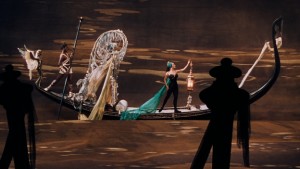 This 1951 film in dazzling Technicolor was the most singular achievement of that most singular of filmmaking duos, Michael Powell and Emeric Pressburger. Building off the international success of The Red Shoes, they created an elaborate adaptation of Jacques Offenbach’s opera starring some of the finest singers and dancers on Earth, including Robert Rounseville (the original Candide), Shoes leading lady Moira Shearer, Robert Helpmann, and Leonide Massine. The serious extravaganza was rejected by the Gene Kelly-Fred Astaire crowds but has since been given its due, and now arrives with eight additional minutes.
This 1951 film in dazzling Technicolor was the most singular achievement of that most singular of filmmaking duos, Michael Powell and Emeric Pressburger. Building off the international success of The Red Shoes, they created an elaborate adaptation of Jacques Offenbach’s opera starring some of the finest singers and dancers on Earth, including Robert Rounseville (the original Candide), Shoes leading lady Moira Shearer, Robert Helpmann, and Leonide Massine. The serious extravaganza was rejected by the Gene Kelly-Fred Astaire crowds but has since been given its due, and now arrives with eight additional minutes.
Hiroshima Mon Amour (7/24 and 7/27)
The number-one film on this list for me of ones I haven’t seen. Alain Resnais, in his first feature film, used every narrative and cinematic trick in the book to tell a love story (written by Oscar-nominee Marguerite Duras) between a Japanese architect and a French actress (played by Emmanuelle Riva, who most recently starred in Haneke’s Amour). Leonard Maltin described it as “The Birth of a Nation of the French New Wave,” and I intend to see if that’s hyperbole or the truth.
Spartacus (7/25 and 7/28)
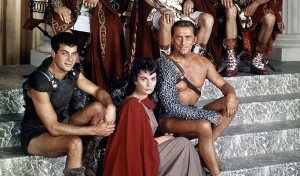 Stanley Kubrick had just turned 30—and had only four indie movies under his belt—when producer/star Kirk Douglas asked him to take over Douglas’s passion project, with a mega-star cast and a powerful Dalton Trumbo screenplay. The result was arguably the greatest of the 50s and 60s epics. For all its widescreen spectacle and Christianity-tinged optimism, the film is infused with Kubrick’s formalism, meticulous composition, and obsession with the darker impulses of our nature, best seen in his scenes with Laurence Olivier and Charles Laughton as they attempt to destroy each other while taking on Douglas’s noble slave warrior. It remains absolutely riveting, especially in the director’s cut with scenes considered too sexual for a 1960 audience.
Stanley Kubrick had just turned 30—and had only four indie movies under his belt—when producer/star Kirk Douglas asked him to take over Douglas’s passion project, with a mega-star cast and a powerful Dalton Trumbo screenplay. The result was arguably the greatest of the 50s and 60s epics. For all its widescreen spectacle and Christianity-tinged optimism, the film is infused with Kubrick’s formalism, meticulous composition, and obsession with the darker impulses of our nature, best seen in his scenes with Laurence Olivier and Charles Laughton as they attempt to destroy each other while taking on Douglas’s noble slave warrior. It remains absolutely riveting, especially in the director’s cut with scenes considered too sexual for a 1960 audience.
The Good, the Bad, and the Ugly (8/1 and 8/4)
This restored and extended cut remains one of the most poetic, evocative, and mesmerizing films ever made, a story of a vast, mythological Civil War America where violence can and will break out any second and money and morality are locked in battle. If you’ve never seen it, it’s living proof of the theory that clichés becomes clichés only because they’re so well done in the beginning…almost fifty years later, so many films have echoes of Sergio Leone’s direction, Ennio Morricone’s score, and Clint Eastwood, Lee Van Cleef, and Eli Wallach’s title characters. Cinema lovers owe it to themselves to see why.
Grey Gardens (8/1 and 8/5)
Albert and David Maysles made some of the greatest documentaries of all time, and if Grey Gardens is not their best, it may have become their most iconic. Co-directing with Ellen Hovde and Muffie Meyer, their chronicle of the two Edith Beales, mother and daughter and relatives of Jacqueline Bouvier Kennedy Onassis, in their decaying Hamptons mansion was a precursor to reality shows and so many slice-of-life tales of American weirdness.
Imitation of Life (8/1 and 8/6)
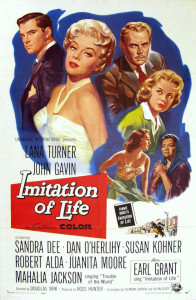 Finally, a movie that roars and rages with Hollywood glamour and ridiculousness, shoehorning so many social issues into one soap opera plot that the audience finally has to submit to the overwhelming ridiculousness of it all and the line between bad and good is obliterated. The final film of one of the most unexpectedly influential directors of all time, Douglas Sirk, Imitation chronicles the friendship of widow/aspiring actress Lana Turner and her maid Juanita Moore through rocky relationships with their daughters and Turner’s swirling romantic life, all building to enough melodramatic climaxes for three movies. It’s worth a big-screen watch to both see Sirk’s skill and revel in the over-the-topness of it all.
Finally, a movie that roars and rages with Hollywood glamour and ridiculousness, shoehorning so many social issues into one soap opera plot that the audience finally has to submit to the overwhelming ridiculousness of it all and the line between bad and good is obliterated. The final film of one of the most unexpectedly influential directors of all time, Douglas Sirk, Imitation chronicles the friendship of widow/aspiring actress Lana Turner and her maid Juanita Moore through rocky relationships with their daughters and Turner’s swirling romantic life, all building to enough melodramatic climaxes for three movies. It’s worth a big-screen watch to both see Sirk’s skill and revel in the over-the-topness of it all.
Images from Brandish, BFI, Histormil, Indiewire, and Wikipedia.

